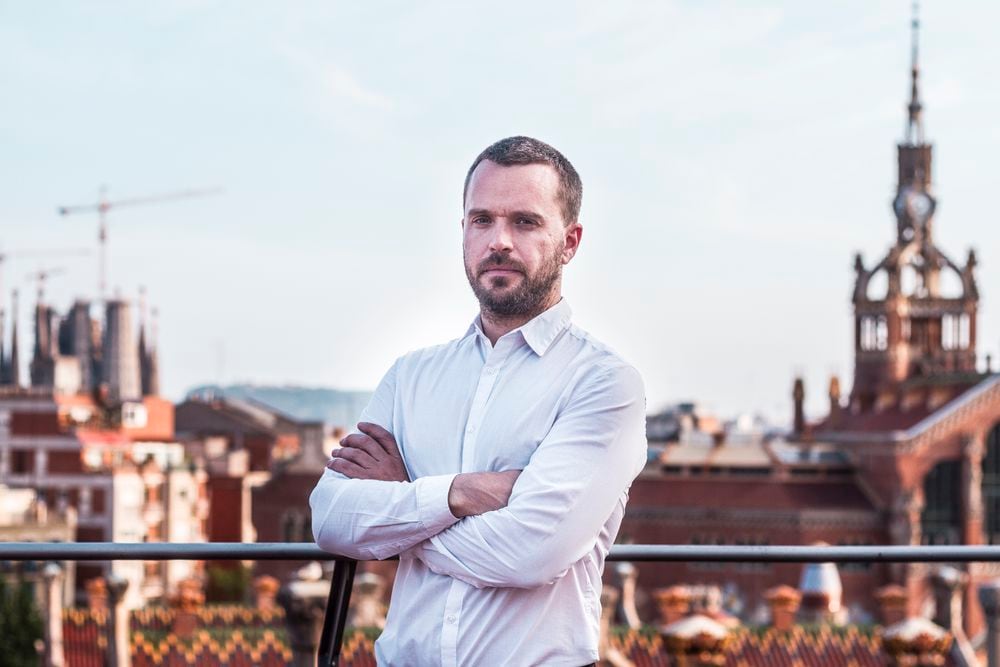Sometimes, to start you have to make difficult decisions. Xavier Palomer, a Catalan physicist and electronic engineer, is convinced of this. In 2013, he dropped out of a doctorate researching how to use antennas for disease detection – an occupation that he said gave him “a future with all the comforts” – to start a business career. “I saw my life on track and I thought that hardly anything new would happen to me, so I rebelled,” he tells by video call from Barcelona, where he returned after three years in Colorado (USA).
Back home he had time to start several projects, until a few months later, in a meeting with friends, the final one came up. “One of them commented that he was afraid of flying and another suggested that it be virtual reality. I stayed with the comment and as soon as I got home, I looked for what research supported these therapies ”, recalls the entrepreneur, and explains that he found that the use of virtual reality in the field of mental health had been endorsed for more than 30 years. “The challenge was above all technological. The problems were there and the solutions were there, but it was still necessary to develop a tool that would allow us to reach the market ”, says Palomer, and concedes that, when he founded Psious, he still saw the development of this technology far away.
The road was going to be long, but the initial 20,000 euros with which he started allowed him to hire several developers and create some prototypes of the future software. To test them, they would 3D print their own virtual reality headsets, waiting for the market to offer better hardware. “The lack of a suitable device was a problem, so we opted to work the commercial part, informing us in detail of the client’s needs, to be able to adapt quickly when the optimal helmet was available.” Although they first used one from Samsung, the expected moment came in 2016 with the launch by Oculus, a company acquired by Facebook in 2014, of one of the best commercial application. They signed the first contracts in the US and Spain and today they have more than 2,000 clients in 60 countries, the vast majority of whom are psychologists and psychiatrists with private practice, who pay between 100 and 200 euros per month depending on the functionalities they subscribe to. They help treat about 30 disorders, from anxieties and depressions to eating disorders or different phobias.
Palomer defines the product of Psious as a “cloud platform”. In it, the professional follows the virtual reality experience in which the patient is immersed live and observes their reaction through graphics that transcribe the heart rate or sweating. With this information, in a third space, he modifies the virtual stimulation to finally make the diagnosis. The platform “only links stimuli and reactions”, argues Palomer, in such a way that “it can be used by professionals of different tendencies”. Most of his clients follow cognitive-behavioral therapies.
Psious had a turnover of one million euros in 2019. For now it has no earnings and has financed its high fixed costs, including a staff of more than 50 workers, mostly psychologists, thanks to 10 million euros obtained in two rounds of investment and “small amounts” from public subsidies. In 2020 their income will increase 50%, below expectations, although Palomer believes that the pandemic has established trends that benefit them, such as telepsychology. “Before, virtual sessions, in which an app replaces virtual reality glasses, barely reached 5%. We improved the tool and now they are 50% “, he points out, and explains that the lower growth is due to the fact that part of his clients” have not adapted “to remote consultations.
Psious is also favored by the takeoff of virtual reality, a market with more and more applications. For this reason, they are now focused on extending the reach of their tool through various projects, including one with the Vall d’Hebron Hospital in Barcelona in which they help breast cancer patients to “get the best possible relationship” with this disease. “Our true goal is to treat the greatest number of conditions and to achieve this, they need to have visibility. We accompany this process so that society demands solutions ”, sums up Palomer.
–


